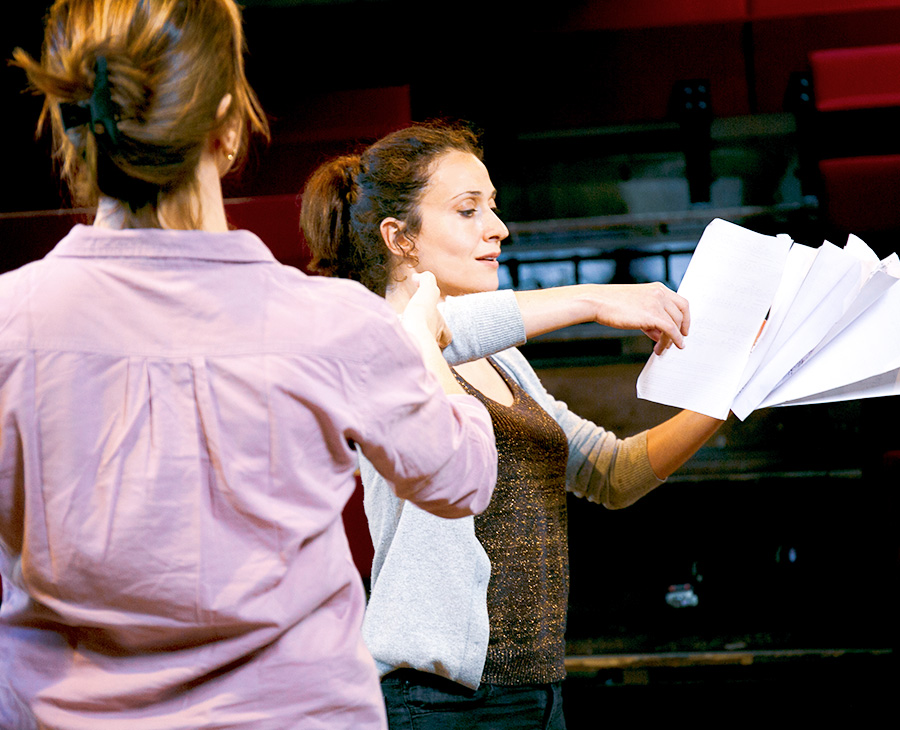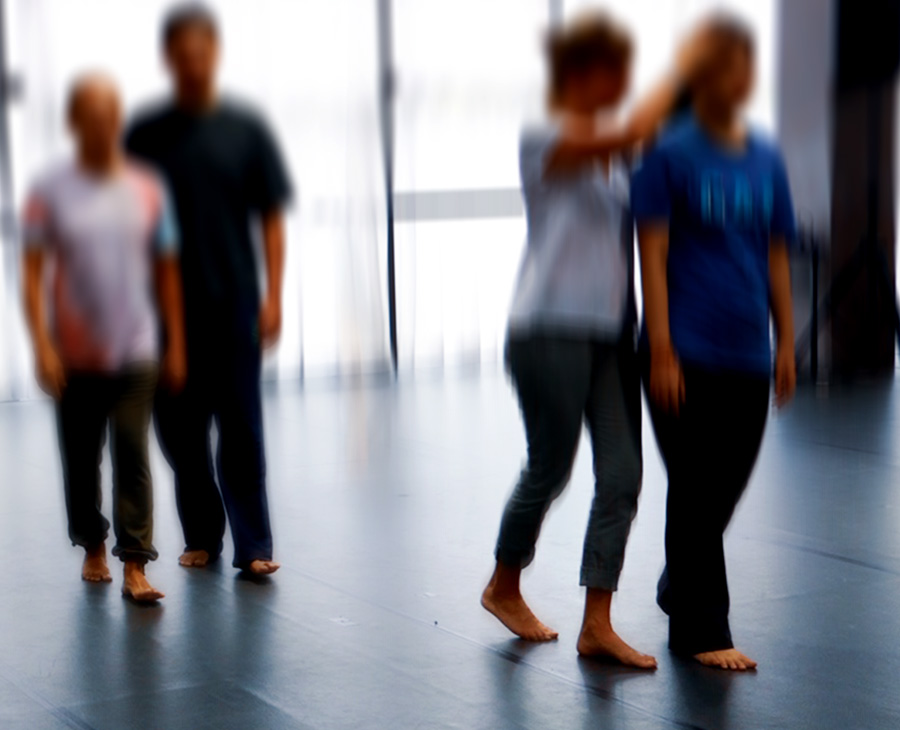TRAINING CFTA AGNÈS DE BRUNHOFF
Alexander Technique for musicians, actors and dancers
TRAINING CFTA AGNÈS DE BRUNHOFF
Alexander Technique for musicians and actors
Improving vocal performance, stage presence and stress management
Who for?
Any musician – instrumentalist or singer – actor or dancer who seeks to improve their performance on stage. Any performing artist suffering from physical tension, vocal limitations, difficulties with their playing, anyone who has had to stop performing because of damage or dysfunction and who now wishes to return to the stage. Artists whose performance onstage is hampered or diminished by nerves.
Requirements
Whilst there are no particular prerequisites for this training programme, it nonetheless demands a considerable personal commitment, and its success depends on regular and conscientious attendance and practice.
Objectives
To use appropriate amount of muscular tension to develop a muscular system which works effectively
To find the relaxation and “stops” which we need to recover when playing and performing onstage.
To free our tensions and let sound, music and voice blossom
To help prevent injury
To improve our management of fatigue and stress in practice
Key points
Developing the tools we need to incorporate recovery and relaxation in practice and to deal with the cumulative fatigue of tours, concerts and performances.
Finding an easier way to express ourselves as artists, blossoming within an appropriate psychophysical relationship as we play and dance.
Programme:
Focus on the body
1) to discover our fundamental psychophysical functioning as human beings through the principles of Alexander Technique (Primary Control, directions, inhibition, observation). Thought allied to the body, working on a chair, on the table, standing up, breathing
2) to recognise the inappropriate tensions created by force of habit and linked to the unreliable sensory perception they engender
3) to inhibit the repetition of inappropriate habits in order to allow room for a new way of organising ourselves so that the tensions are no longer systematic
APPLYING ALEXANDER TECHNIQUE to Music, Dance and Drama
A dialogue between your body and your instrument and movement
1) taking Alexander Technique principles with you as you sit down with your instrument (for musicians); taking a new look at how we all approach movement, using inhibition, directions and primary control, endeavouring to remain within our blossoming body instead of sinking back into the limitations imposed by our habits
2) observing in the mirror how we prepare to play our instrument, recite a text, or warm up at the barre, then continuing to apply Alexander’s procedures as we start to play, sing or dance. Appropriate use of the body is the emphasis for musical, dramatic or dancing movements, which means stopping and starting again as soon as we become disorganised within our body
Interpretation
1) performing a piece of music, a text or a dance “as usual” and observing what remains from our previous work on the body. Taking stock of how we can forget, or even distort our body when we use it for playing, acting or dancing
2) a new approach to the piece, the role or the dance in partnership with the body. Giving ourselves time to think, to keep taking care of the primary instrument which is our body, whilst also paying attention to our musical instrument, voice or dancing body. This observation may initially feel conflictual, but through repetition it enables us to taste the power of a body blossoming in the service of art.
3) working on phrasing by linking it to the dynamic pulse of our body
4) working on dynamics and expression through safe, indirect movement
Our training programmes:
1) 20 hours of individual coaching
One-hour sessions divided between Alexander Technique preparation and work on repertoire or text
2) Coaching in small groups (2-5 people)
Individual one-hour introductory sessions on Alexander Technique (sessions to be organised with each member of the group)
Group sessions: 3 hours
Practical application to a work from the group’s repertoire
Playing the same work, all together section by section, working on each member of the group while they play
3) Coaching in larger groups (more than 5 people)
Observing, taking notice of and analysing movements all together: 1 hour
Practical application working on repertoire common to all the group: 3 hours
Training programmes take place either at the CFTA studio or at the group’s rehearsal space.
Estimates available on request
Coach: Agnès de Brunhoff
Singer and pianist, composer and qualified Alexander Technique teacher since 1993 (London Society of Teachers of the Alexander Technique), vocal, instrumental and stage coach, Agnès de Brunhoff’s career has always embraced both performance and teaching. She has taught at the London Guildhall School of Music and Drama, the European Union Youth Orchestra and the Studio de Variétés (Popular Music Studio), and how holds teaching posts at the Paris Conservatoire (Conservatoire national supérieur de musique et de danse de Paris) and the Paris Opera Academy. She runs a large number of workshops for music teachers in Paris and in conservatoires, and by invitation at the Princess Galyani Vadhana Institute of Music and the DPAC in Kuala Lumpur.
In October 2008 she founded the Alexander Technique Training Centre (CFTAlexander), where she trains teachers of this Technique. She is currently coach to the Trio Atanassov and the singer Julie Robert Gendre.
In 2012 Delatour published Agnès de Brunhoff’s “En scène ! Corps à corps avec la Technique Alexander” with a revised version in 2015 and a translation with Joanna Britton “On stage ! Back to back with Alexander Technique”in 2013. It was followed in 2017 by “Les coulisses de l’être déployé” and its translation with Sophie Decaudaveine “Backstage mysteries of body and mind” éditions Delatour.



